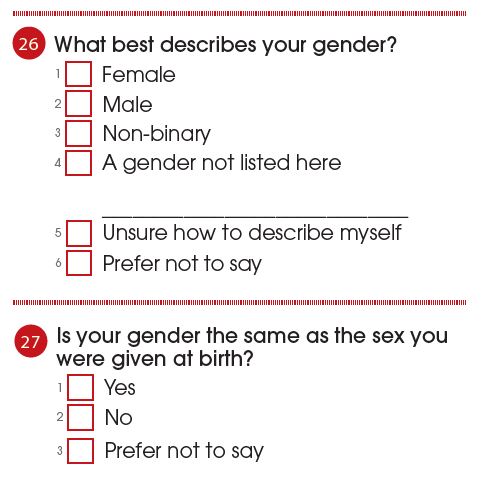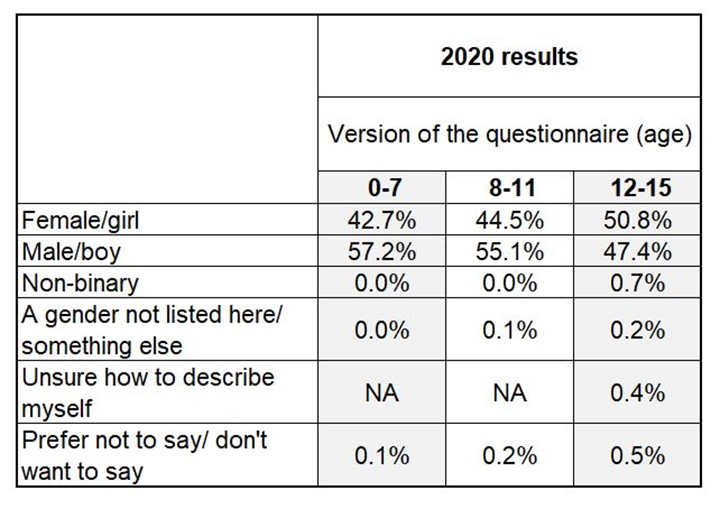The much-needed move to gender-inclusive surveys
To celebrate Pride Month, Picker outlines the importance of adapting surveys to be gender-inclusive and shares best practice in doing so.
In recent years, the conversation surrounding gender identity and language has seismically grown. We have only really begun to realise just how outdated gendered language has become and how, up until recently, it was still widely accepted. From ‘policeman’ to ‘cleaning lady’, gendered language perpetuates stereotypes, hinders social change, and excludes those who do not identify with society’s traditional gender constructs of a man or a woman.
A growing conversation
The increasing number of voices asking for a firmer understanding and education toward gender identity and expression has led to widespread change across industries to support gender-neutral and inclusive language. A notable example of gender inclusivity becoming more evident in professional settings came in 2021 when LinkedIn offered users the option to specify pronouns on their profiles. This may not appear to be big news to the majority, but it demonstrated a significant step toward inclusivity of different genders, enabling users to show their authentic selves, and let others know how they wish to be identified.
Insightful results require broader options
Social surveys in the UK have, until recently, tended to ask people about their sex (as opposed to their gender) and allow only ‘male’ and ‘female’ as options. This can feel excluding to people who identify as another gender or agender because it prevents them from giving a response that describes their identity in the way they are most comfortable with. It also prevents researchers from investigating the experiences of people who do not identify as male or female.
To fully understand everyone’s unique experience within health and social care, questions with broad options are needed to produce insightful results. The challenge, however, is developing questions that are appropriately inclusive without becoming unduly complex. There are many ways in which individuals can identify their own gender; listing every possible option is not always practical. A balanced approach is needed to demonstrate inclusivity, collect meaningful data, and enable insightful analysis.
Redeveloping gender questions at Picker
At Picker, along with our partners at the Care Quality Commission (CQC), we took the step to redevelop the gender questions in the Children and Young People’s (CYP) survey to demonstrate its commitment to inclusivity and ensure all experiences are captured. Within the CYP survey are three questionnaires that focus on different age groups:
- 0-7 years, which asked, ‘Is your child male or female?’
- 8-11 years which asked, ‘Are you a boy or a girl?’; and
- Lastly, 12-15 years which asked, ‘Are you a male or female?’
None had a ‘prefer not to say’ or an ‘other’ option.
The due diligence within its redevelopment was threefold. First, we carried out desk research to ensure best practice. Second, workshops were held with a number of LGBTQIA+ organisations that work closely with gender-diverse children, young people, and their families including Mermaids, Sayit, Medway Gender Sexual Diversity Centre and CQC’s Equality, Diversity and Human Rights team. Their expertise was critical in empowering Picker staff to increase their knowledge, empathy, and understanding of the experiences of gender-diverse children and young people and gather feedback on what questions were deemed appropriate. Finally, several question options were put forward and tested with children that identified as another gender. In 2020, the CYP survey was released with redeveloped gender questions for the three questionnaires:
- The 0-7 years survey now asks, ‘What best describes your child’s gender?’
- The 8-11- and 12-15-years surveys’ now ask, ‘What best describes your gender?’

In addition, in the 12–15-year-old survey, we added the question, ‘Is your gender the same as the sex you were given at birth?’. The results for the new gender question was reported at trust level and nationally. Patient experience was also analysed by the new gender question to understand how the experience differed
In its first year, the new gender question enabled nearly 1% of respondents in the 12–15-year age group to identify as non-binary. In the 8-11-year-age group, 0.1% selected ‘a gender not listed here’, and 0.2% selected ‘prefer not to say’. 0.1% of the 0–7-year age group selected ‘prefer not to say’.

National results from the 2020 Children and Young People’s Patient Experience Survey (0 – 15-year-olds).
Only the first step towards inclusivity
Our team is committed to understanding the health and social care experiences of each and every person, no matter who they are or how they identify. The redevelopment of gendered questions within the CYP survey is just one example that no change is too small in the campaign for diversity, inclusivity, and equality.
Read our summary of the results from the 2020 CYP survey.

